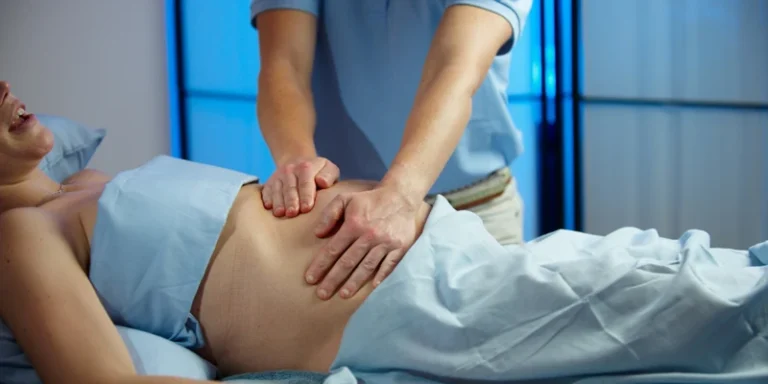Prenatal massage is a type of massage specifically designed for pregnant women. It is a great way to reduce stress, improve circulation, and promote relaxation during pregnancy. So, what does a prenatal massage consist of? In this article, we will explore the components of a prenatal massage, how to enjoy the benefits of a prenatal massage, and the contraindications to keep in mind when considering this type of massage.
Contents
Benefits of Prenatal Massage
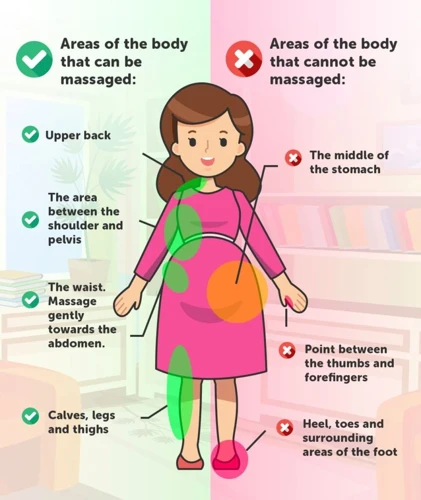
Prenatal massage offers many benefits for expecting mothers. It can provide relief from physical and emotional discomfort, promoting relaxation and helping to reduce stress levels. Here are some of the benefits of prenatal massage:
- Reduces stress and anxiety
- Relieves physical discomfort, such as back and joint pain
- Improves sleep
- Reduces swelling and fluid retention
- Reduces muscle tension
- Improves circulation
- Improves fetal development
A prenatal massage can be a great way to relax and unwind during pregnancy. However, it is important to ensure you are receiving the massage from a qualified practitioner who is experienced in how to give prenatal massage. This will ensure you receive the maximum benefit from the massage with minimal risk to your health.
Techniques Used in Prenatal Massage
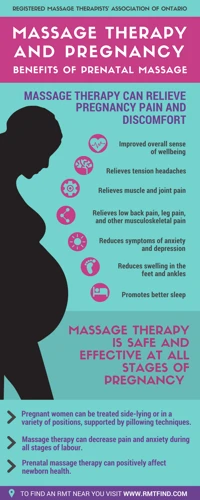
- Swedish Massage: This massage technique uses long, gliding strokes, kneading, and circular movements to relax the muscles and improve circulation.
- Trigger Point Therapy: This technique involves applying pressure to areas of the body that are known to cause discomfort, such as the back and neck.
- Aromatherapy: Aromatherapy is used to provide a calming and soothing atmosphere during the massage. Essential oils are used to target specific areas of the body, providing relief and relaxation.
- Shiatsu: This Japanese massage technique uses pressure points to stimulate energy flow throughout the body.
- Reflexology: This technique involves applying pressure to specific points on the feet, hands, and ears to promote relaxation and healing.
- Sports Massage: This massage technique focuses on the muscles and joints to improve flexibility, reduce pain, and enhance athletic performance.
- Deep Tissue Massage: This massage technique uses deep, firm pressure to target the deeper layers of muscle and connective tissue.
Preparing for a Prenatal Massage
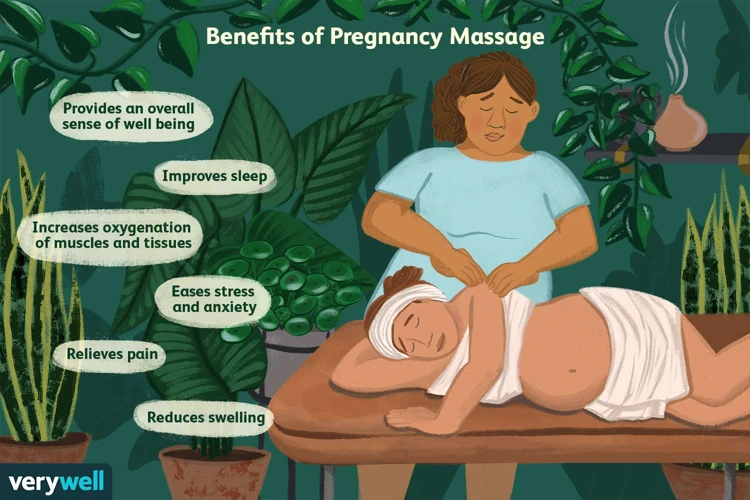
- Choose a certified massage therapist: It is important to make sure that the massage therapist you choose is certified and experienced in providing prenatal massage. Ask questions and make sure that the therapist understands your needs and can provide a safe and relaxing massage.
- Schedule your massage: It is best to plan your massage for a time when you are not too tired, such as after work or during a weekend. You may also want to book the massage for a time when you can relax for a few hours afterwards.
- Communicate your needs: Make sure that you communicate your needs and preferences to the massage therapist before the session. This will ensure that the massage is tailored to your specific needs and that you are comfortable throughout the session.
- Dress comfortably: Make sure that you dress comfortably for the massage. Wear loose-fitting clothes that will allow you to move freely and be comfortable during the massage.
- Bring beverages and snacks: It is important to stay hydrated and well-nourished before and after a massage. Bring a bottle of water and some snacks to have after the massage.
How to Give a Prenatal Massage
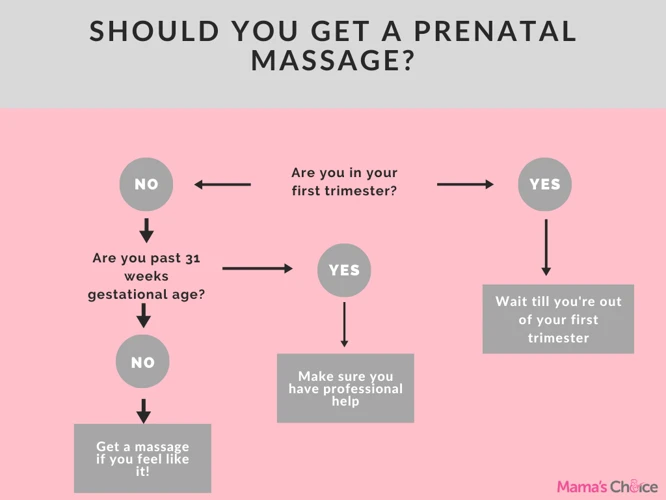
Before the Massage
Before beginning a prenatal massage, it is important to consult with the expecting mother to discuss her medical history and any special considerations that should be taken. During this conversation, the massage therapist should learn about the pregnancy, including how far along the mother is, if there are any issues or complications, and if the baby is in a healthy position. After discussing the mother’s needs, the therapist can then advise if a prenatal massage is safe.
During the Massage
The massage therapist will then use a combination of techniques suited for the expecting mother’s individual needs. Common techniques include Swedish massage, deep tissue massage, reflexology, and acupressure. During the massage, the therapist will use slower, lighter strokes, as well as more focused techniques, such as applying pressure to specific points on the body to help relieve discomfort.
After the Massage
After the massage, the therapist should provide the mother with instructions for self-care and suggest further treatments if needed. The mother should also be encouraged to drink plenty of water and get plenty of rest. The massage therapist should also follow up with the mother to ensure the massage has been beneficial and to answer any questions she may have.
Prenatal massage can be incredibly beneficial to an expecting mother. When done properly, it can help reduce stress and anxiety, improve sleep, and reduce any discomfort associated with pregnancy. With proper guidance and care, pregnant women can enjoy the benefits of a relaxing prenatal massage.
Safety Considerations
- Choose a Qualified Massage Therapist: It is essential to choose a qualified massage therapist who is experienced in providing prenatal massages. The therapist should be aware of the body’s changing needs and able to adjust the massage accordingly.
- Discuss Health Issues with the Therapist: Before the session, it is important to inform the therapist of any health issues, such as pregnancy-related conditions, and any medications that are being taken.
- Avoid Certain Areas: Pressure should not be applied to the abdomen, breasts, or feet. Areas around the lower back should also be avoided, as these are more sensitive during pregnancy.
- Stay Positioned Comfortably: The position of the woman should be comfortable and secure. The woman may choose to lie on her side, or the massage therapist may provide a special support pillow to ensure that she is comfortable and well-positioned.
- Let the Therapist Know: If at any point the massage becomes uncomfortable, the woman should inform the therapist. The massage therapist should adjust the pressure accordingly.
Contraindications
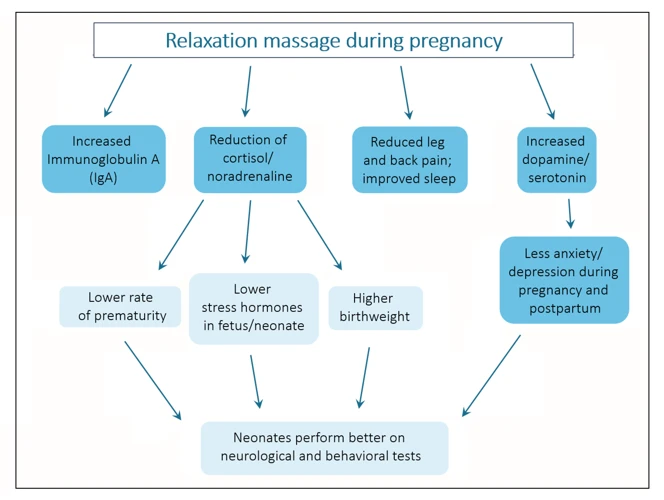
| Contraindication | Explanation |
|---|---|
| Recent surgery or injury | Prenatal massage is not recommended for women who have recently had surgery, as it can disrupt healing. |
| High-risk pregnancy | Women with high-risk pregnancies should consult their doctor before getting a prenatal massage. |
| Preterm labor | Women who are experiencing preterm labor should avoid prenatal massage. |
| High blood pressure | Women with high blood pressure should speak to their doctor before getting a prenatal massage. |
| Severe headaches | Women who are experiencing severe headaches should not get a prenatal massage. |
Prenatal massage is a great way to relax and reduce stress during pregnancy, but it is important to be aware of the potential contraindications. Women should not get a prenatal massage if they are experiencing recent surgery or injury, high-risk pregnancy, preterm labor, high blood pressure, or severe headaches. It is always best to consult a doctor or a qualified massage therapist before getting a prenatal massage.
Common Questions
- What are the benefits of a prenatal massage? A prenatal massage can provide relief from aches and pains, reduce stress, and improve circulation. It can also help reduce swelling, improve sleep, and boost mood.
- How often should I get a prenatal massage? Depending on your needs and preferences, you can get a prenatal massage anywhere from once a week to once a month.
- Is it safe to get a prenatal massage? Yes, as long as you are healthy and your doctor has given you the go-ahead to get a massage. It is important to let your massage therapist know if you are pregnant or have any health conditions.
- What should I wear to a prenatal massage? You should wear loose, comfortable clothing. The massage therapist will provide a sheet or towel to cover you during the massage.
- Is there anything I should do before or after a prenatal massage? Before the massage, it is important to drink plenty of water and to stay well-hydrated. After the massage, it is helpful to take a warm bath or shower, and to drink more water to help your body flush out any toxins that were released during the massage.
Frequently Asked Questions
What are the Benefits of Getting a Prenatal Massage?
Prenatal massage offers many benefits, including improved mental and physical wellbeing. It can help reduce stress, anxiety, and tension, improve circulation, relax the muscles, and reduce pain. It can also help improve sleep quality, reduce fatigue, reduce swelling in the arms and legs, improve posture, and reduce the risk of developing complications during pregnancy. Additionally, prenatal massage can help increase oxytocin levels, which can promote relaxation and bonding between mother and baby.
Is it Safe to Get a Prenatal Massage?
Prenatal massage is generally considered safe when performed by a qualified massage therapist. It helps to relieve stress, reduce swelling, improve circulation, and relax tense muscles. The massage should be customized for pregnant women and their changing bodies, and the massage therapist should be trained and experienced in prenatal massage. Women should talk to their doctor before getting a prenatal massage to make sure it’s safe for them.
What are the Risks Associated with Prenatal Massage?
Prenatal massage carries some risks if not performed by a qualified massage therapist, such as an increased risk of miscarriage, preterm labor, or placental abruption. Low birth weight and developmental delays are also possible risks. It is important to note that the risks can be minimized with the right massage technique and if proper precautions are taken. It is important to always consult a doctor before undergoing any type of massage.
Is Prenatal Massage Only for Pregnant Women?
No, prenatal massage is not only for pregnant women. While it is designed to help pregnant women manage the physical and emotional changes that come with pregnancy, it can also benefit non-pregnant individuals. Benefits of prenatal massage may include:
- Reducing stress and anxiety
- Improving circulation
- Relieving aches, pains, and muscle tension
- Improving sleep
- Reducing fatigue
- Improving posture
- Boosting the immune system
Prenatal massage can also be beneficial for people who experience chronic pain, headaches, digestive issues, or other physical and mental health issues.
What qualifications do massage therapists need to provide prenatal massages?
Massage therapists providing prenatal massages should have:
- Specialized training and certification in prenatal massage
- Knowledge of anatomy and physiology of the pregnant body
- Knowledge of the common discomforts of pregnancy
- Understanding of the risks associated with massage during pregnancy
- Awareness of contraindications for massage during pregnancy
- Ability to adjust massage techniques for pregnant clients
Conclusion
Prenatal massage is a great way to reduce stress, manage pain, and improve overall physical and mental health during pregnancy. It is important to talk to your doctor or midwife about the safest way to enjoy the benefits of prenatal massage. With the right techniques and precautions, pregnant women can enjoy a relaxing massage and the many health benefits that come along with it.
References
- Giovinazzo, K. (2020, April 11). What Does a Prenatal Massage Consist of? Learn How to Enjoy the Benefits of a Relaxing Prenatal Massage. Verywell Family.
- Everett, C. (2020, June 30). Prenatal Massage: Benefits, Techniques, and Potential Risks. Healthline.

